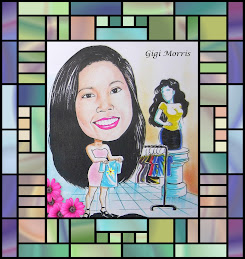Fashion Design lessons: In creating apparel design, you don’t necessarily have to do an Albert Einstein and invent a new product or design. The word re-inventing fashion means modifying existing style and details. Oftentimes it means combining detail or details of one style to the other. That’s the reason why I hear fashion design students refer to gaucho pants as palazzo pants. Or refer to Bermuda Short as Pedal Pusher. Human have been wearing clothes since time immemorial. What you think an entirely new idea may have already been done before! That’s why court cases on “knock-offs” are hard to prove in American Courts.
So suppose you decide to stay true to the pattern or make minor alteration to it, one way to make it interesting is to use interesting fabric and create interesting details. For simple illustration purposes, let me take the basic Simplicity Pattern 2645-E which is a gored skirt. Here is a different way of using this pattern as a starting point in creating apparel.
Fashion Design lesson: In the apparel industry, most apparel companies maintain their basic block patterns. These basic blocks are made according to the company's size specification that were developed based on its standards. These are oftentimes grouped according to basic styles and product classificifation and selling seasons. Apparel designers oftentimes used them as starting point to generate idea for new line, patternmaker used them as starting point in drafting the pattern. This is how company size standards are set and maintained. With the advent of advanced technology, sample rooms are no longer filled with tons and tons of hard-copy of patterns instead they are stored electronically. I still remember 20 years ago, navigating our sample room filled with thick board patterns and the difficulty of getting them organized. As soon as we transition to computerized patternmaking, voila .... from a messy to a well-organized and more efficient sample-room.
As illustrated above, just by combining 3 or more patterns, using coordinated fabrics and trims in different color combinations, one can create a line or collection of skirts! In my class, I always tell the students that as a fashion design student, when they are creating a design it is really not nice to hear the question, "where do I start?" Use your creativity - there a thousand of ways to start a design!
I will focus on the two Award Categories of the ASG challenge:
2. Most Interesting Wardrobe Concept.
First category - whether you decide to modify the pattern or be true to the Simplicity pattern, this challenge is about your creativity, ability and skills in manipulating your fabric and trims. Try to think outside the box, push your creative juices. You are making one piece - you don't have to worry about coordinating it with any other pieces. If you are a couture designer or aim to be one - this is the challange I recommend.
The second category - the thought process for this challenge should be that of an apparel designer creating a collection. This is where as a designer, your editing skills is needed in your design ability. What basic pattern pieces to use as starting point? What details to put together? What fabrics to coordinate? Unlike the first challange, I don't recommend tht you go overboard, like I said, you need to "edit" your design to create an interesting yet well-cohesive and coordinated pieces.
My dear, time to let your fashion design creative juices flow!









No comments:
Post a Comment